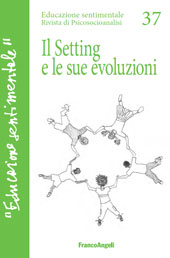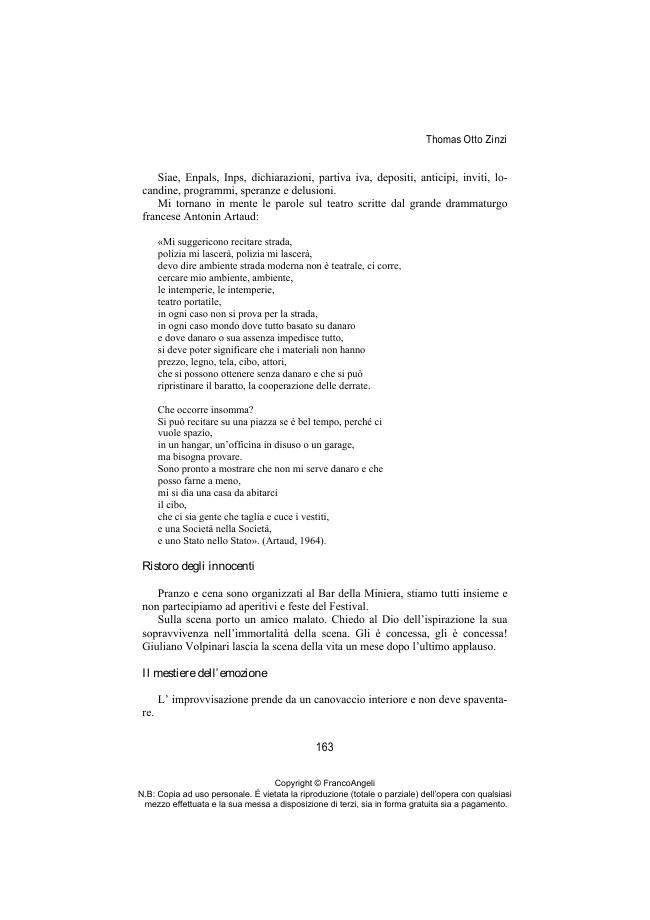Lo spazio scenico infinito che è negli uomini
P. 160-165
Lo spazio scenico non è solo un setting. È forse l'idealtipo e l'archetipo del set-ting. Seguendo la linea a zig zag tra la pratica teatrale e la riflessione su quella pratica, si possono evincere profonde implicazione per ogni altro tipo di setting e, in particolare, per quello clinico e terapeutico. Perché quel setting è uno spazio che è prima di tutto interno a chi lo vive. Con le parole dell'autore: «Lo spazio scenico è vuoto, l'attore scrive in scena la vita del suo personaggio. Quando entro nello spazio scenico non c'è nulla. Neppure la produzione. Un ragazzo con una testa più grande degli altri vuole parlare, raccontare, far parte di quest'umanità. Il palcoscenico diventa la sua piazza: parla, ride e con una lacrima si forma una pozzanghera d'acqua pulita». [Testo dell'editore]
The infinite stage space that is in the people. The stage space is not just a setting. It is perhaps the idealtype and archetype of the setting. Following the zig zag line between theatrical practice and reflection on that practice, it is possible to deduce profound implications for any other type of setting and, in particular, for the clinical and therapeutic one. Because that setting is a space that is first of all internal to those who live it. In the words of the author: «The stage space is emp-ty, the actor writes the life of his character on stage. When I enter the stage space there is nothing. Not even the production. A boy with a head bigger than the others wants to talk, tell, be part of this humanity. The stage becomes his square: he talks, laughs and with a tear a puddle of clean water forms». [Publisher's text]
Forma parte de
Educazione sentimentale : 37, 1, 2022-
Artículos del mismo número (disponibles individualmente)
-
Información
Código DOI: 10.3280/EDS2022-037014
ISSN: 2037-7649
KEYWORDS
- Spazio scenico, relazione estetica, contesto, invenzione, drammaticità
- Stage space, aesthetic relationship, context, invention, drama



